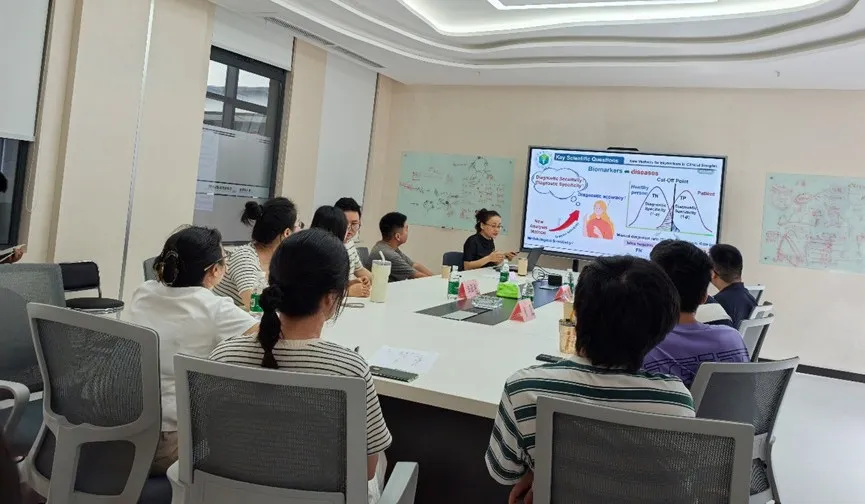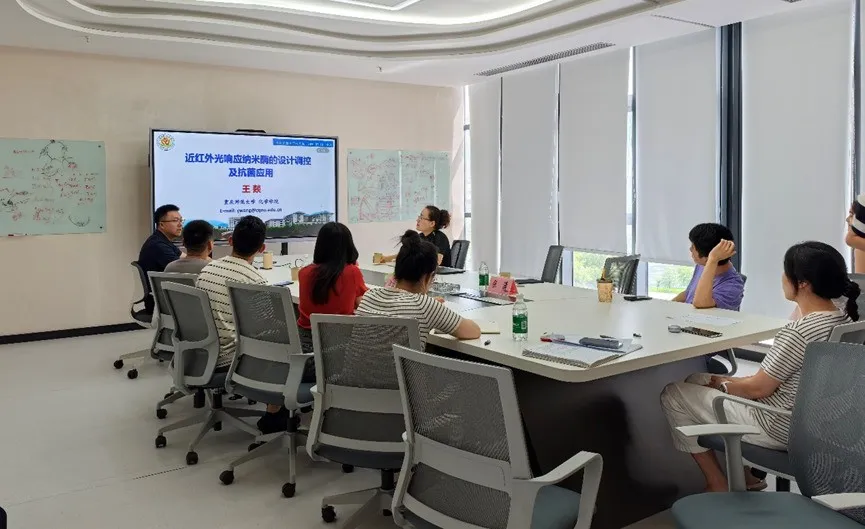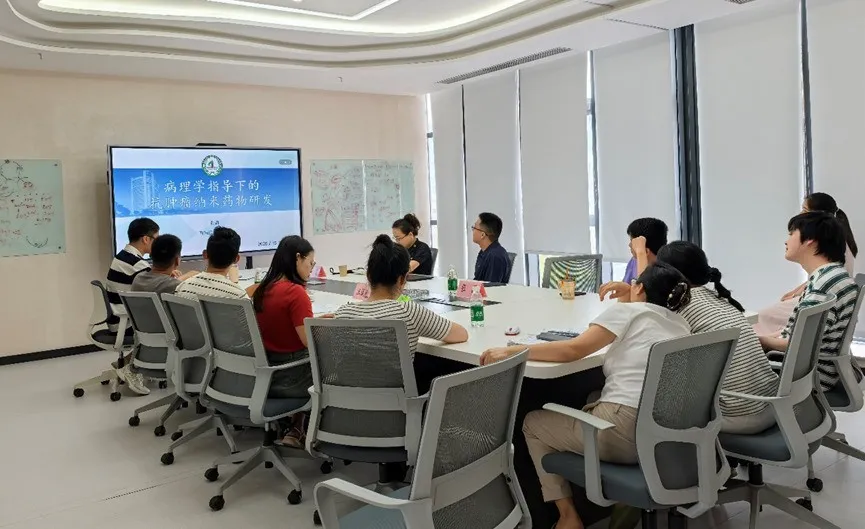
Lecture review
Lecture 1: High sensitivity detection and real-time monitoring of low-abundance polypeptide proteins in vitro

Introduction to the speaker
Zhang Pu,Distinguished professor and doctoral supervisor at Chongqing Medical University. He is currently the deputy director of the Drug Engineering Research Center of Chongqing University. He was selected as the top provincial and ministerial talent in the Chongqing Talent Program. He won the Nomination Award for the 13th Chongqing Youth Science and Technology Innovation Mayor Award (Professional Youth Group), a pioneer figure in Chongqing Youth Science and Technology Innovation in 2022, etc. The research direction is high-sensitivity analysis and diagnosis and treatment of drug-resistant pathogens in the body. He presided over 10 scientific research projects including the National Natural Surface and Qingji. He was the first or corresponding author in Nano. Lett. et al. publish SCI 40 articles, with a total of more than 270 IFs, 8 IFs>10 points, 3 authorized patents, and 7 publications. They serve as a member of the Drug Analysis Technology Branch of the China Medical Biotechnology Association, a young director of the Chinese Optometry Society, a member of the 6th Chongqing Education and Culture Committee of Jiusan Society, and an academic journal Journal of Pharmaceutical Analysis (JPA) and Journal of Analysis and Testing (JAT) Youth Editorial Board. Teaching and research are in harmony. He has won the second prize of the National Excellent Textbook Award (national level, ranking 4th), and has participated in the compilation of the textbook "Basic Drug Analysis" of the Science Press. He has continuously guided undergraduates to win the second and third prizes of the National Innovation Achievements of the National College Students' Pharmaceutical Garden Forum.
Main content
Professor Zhang Pu deeply analyzed the key challenges in the fields of biopharmaceuticals and precision medicine - the problem of accurate quantification of ng/pg-grade low-abundance peptides/proteins. In response to bottlenecks such as the susceptibility to interference in complex samples in vitro and difficulty in in-situ monitoring in vitro, the team has innovatively built a two-dimensional technical system: at the in vitro detection level, a high anti-interference signal amplification platform has been developed, which significantly improves the detection sensitivity and accuracy of complex substrates such as clinical blood samples, and provides a reliable methodological basis for biopharmaceutical quality control and disease diagnosis. ; At the in vivo monitoring level, the three-dimensional spatial distribution analysis of target proteins such as heart failure markers is achieved through co-localization of fluorescence/photothermal dual-mode imaging technology, breaking through the limitation that traditional technology cannot dynamically track the behavior of in situ molecules. This study not only established a complete technical chain of "in vitro ultra-sensitive quantification - dynamic analysis of space-time in vivo", but its clinical sample verification results provide new tools for personalized diagnosis and treatment and drug development, marking an important innovation in the biomolecular monitoring paradigm.
Lecture 2: Design and regulation of near-infrared light-responsive nanoenzymes and antibacterial applications

Introduction to the speaker
Wang Yi,Doctor, Dean/Professor of the School of Chemistry of Chongqing Normal University, Doctoral Supervisor, Academic and Technical Leader of Chongqing City, Leading Expert of Chongqing Youth Expert Studio, Executive Deputy Director of Chongqing Key Laboratory of Green Catalytic Materials and Technology, Head of Innovation Research Group of Chongqing University in Precision Nanosynthesis and Catalytic Application, Vice Chairman of Chongqing Society of Chemistry and Chemical Engineering, and Executive Director of Chongqing Society of Biomedical Engineering. He is mainly engaged in the application research of nanostructure precision regulation and biosensing, antibacterial and other applications. He has presided over more than 10 projects including the National Natural Science Foundation and provincial and ministerial key projects. He is the first and corresponding author in J. Am. Chem. Soc., ACS Nano, Nano Lett., Anal. Chem. and other journals have published more than 90 academic papers, and he cited more than 6,000 times. He is a personal H-index 37. He has published 1 academic monograph, 4 patents authorized, and won the National Outstanding Science Popularization Works Award, the Third Prize of Chongqing Natural Science, and the Chongqing Innovation Prize Award.
Main content
Professor Wang Yi systematically elaborated on the cutting-edge research progress of near-infrared light-responsive nanoenzymes and its breakthrough application in drug-resistant bacterial infection treatment. In response to the clinical pain points such as poor stability and high cost of traditional enzyme preparations, the report focuses on the emerging direction of near-infrared light-responsive nanoenzymes, and focuses on analyzing the team's core innovation in material design: by accurately regulating the plasmon resonance characteristics of precious metal nanomaterials, we can achieve enhanced cascaded catalytic activity driven by near-infrared light. Studies have shown that this photothermal synergistic catalytic mechanism can efficiently generate large amounts of reactive oxygen species, triggering strong antibacterial activity in deep tissues ; The nanoenzyme platform developed based on this has shown significant therapeutic effects in the multidrug-resistant bacteria infection model. Its light control characteristics can not only accurately activate the catalytic function in time and space, but also effectively avoid the systemic toxicity of traditional antibiotics. This work not only reveals the physicochemical mechanism of the enhanced nanoenzyme activity by the plasmon effect, but also provides a new paradigm for the development of next-generation intelligent anti-infection preparations, demonstrating the huge potential of nanoenzyme technology from basic research to clinical transformation.
Lecture 3: Research and development of anti-tumor nanodrugs under the guidance of pathology

Introduction to the speaker
Zhang Xiao,Doctor, researcher in the Department of Pathology at the First Affiliated Hospital of the Army Military Medical University (Southwest Hospital), Youth PI, and a young scholar in Bayu, Chongqing. He has been engaged in research on anti-tumor nanodrugs for a long time, presided over 5 national and provincial and ministerial projects, published 17 SCI papers as the first author or corresponding author, with a total of more than 7,000 citations, H factor 41, and 2 authorized patents.
Main content
Researcher Zhang Xiao systematically elaborated on the research ideas of pathology to guide the development of nanodrugs: based on clinical pathological discoveries, targeted/personalized design of nanodrugs, and then conduct research on drug efficacy, toxicology and mechanisms. This research idea introduces pathological research results into nanodrug design, which can achieve the precise adaptation of individualized targeting, responsive release and combined treatment strategies, improve treatment effects and promote clinical transformation. Based on this, Researcher Zhang Xiao introduced in detail the research progress of his research and development of nanodrugs such as nitric oxide sensitization chemotherapy, copper death against chemotherapy resistance, and chemotherapy hand and foot syndrome nano. Its report is based on the exploration and analysis of tumor pathological characteristics, introduces the design ideas and efficacy verification results of a variety of new anti-tumor nanodrugs, and provides more targeted and effective new solutions for clinical treatment.